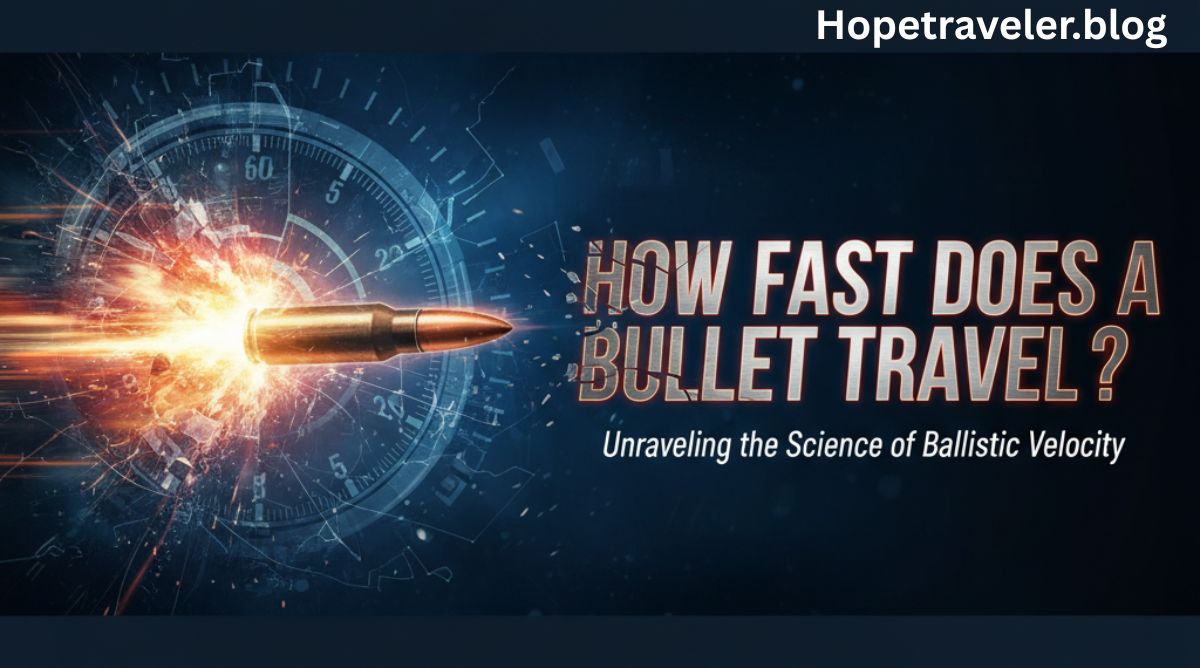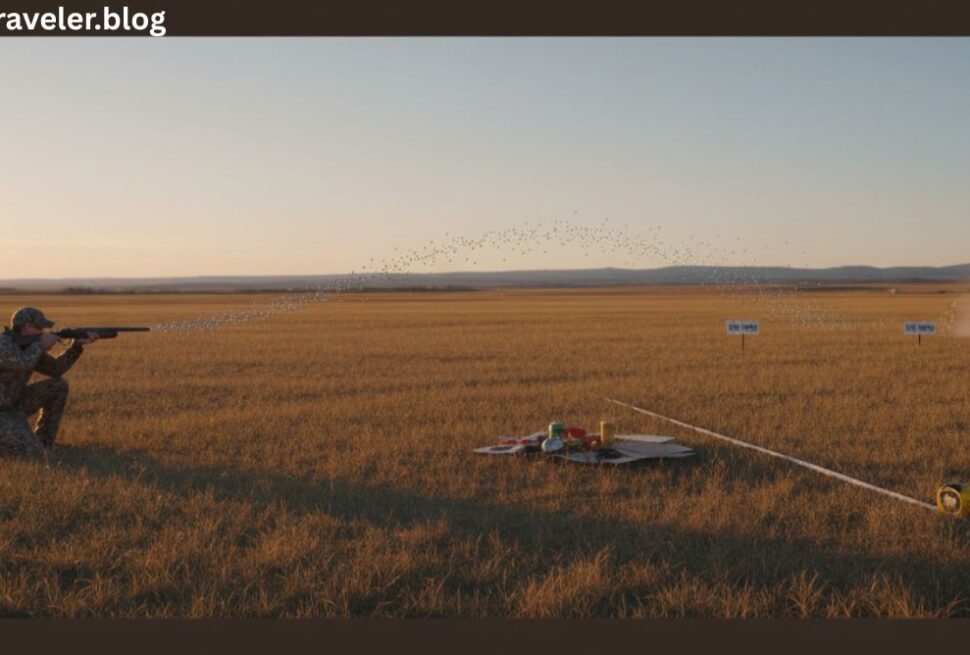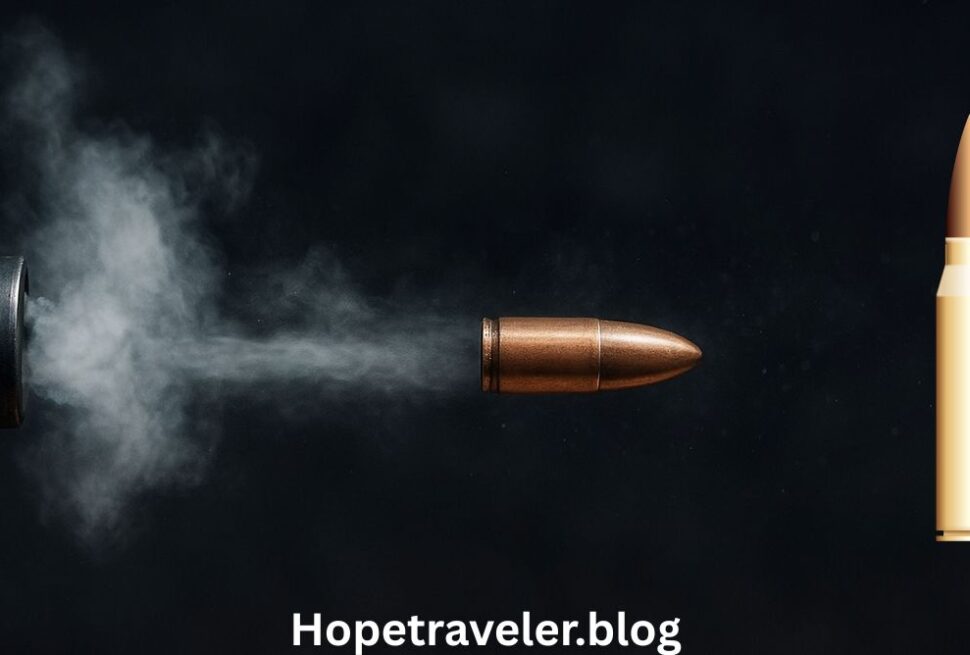The question “How fast does a bullet travel?” may seem simple, but it opens the door to a fascinating study of physics, engineering, and ballistics. Bullet speed depends on multiple factors, including the type of firearm, ammunition, bullet design, and environmental conditions. Understanding bullet velocity is not only important for firearms enthusiasts but also for scientists, law enforcement officers, and forensic experts.
In this comprehensive article, we will explore how fast bullets travel, the science behind bullet speed, and the variables that determine their velocity. To understand more about how bullets function and are categorized, you can visit the Wikipedia page on Bullet.
⚙️ What Determines How Fast a Bullet Travels
The speed of a bullet is influenced by several interconnected factors. Below are the most significant ones:
1. Type of Firearm
The firearm used plays a crucial role. A rifle typically propels bullets much faster than a handgun or shotgun because of the longer barrel and higher-pressure cartridge. Rifles can fire bullets at speeds exceeding 3,000 feet per second (fps), while handguns often range between 700 to 1,500 fps.
2. Cartridge and Caliber
The cartridge (which includes the bullet, powder, primer, and casing) determines how much energy is released upon firing. A larger caliber usually contains more gunpowder, producing greater pressure and higher speed.
3. Barrel Length
A longer barrel allows the expanding gases to push the bullet for a longer time, increasing velocity. That’s why sniper rifles generally have longer barrels compared to pistols.
4. Bullet Design and Weight
Heavier bullets tend to move slower but retain energy better over long distances. Lighter bullets travel faster but can lose stability sooner. Aerodynamic designs such as boat-tail bullets can maintain high velocity for longer distances.
5. Environmental Conditions
Air pressure, humidity, and wind can affect bullet speed. Lower air density (for example, at high altitude) allows bullets to travel faster because there’s less drag.
💥 Average Bullet Speeds by Firearm Type
Let’s look at the average velocities across various types of guns and ammunition.
| Firearm Type | Bullet Caliber | Average Speed (fps) | Speed (m/s) |
|---|---|---|---|
| Handgun (9mm) | 9×19mm Parabellum | 1,100 fps | ~335 m/s |
| Handgun (.45 ACP) | .45 Automatic Colt Pistol | 850 fps | ~259 m/s |
| Rifle (.223 Remington) | 5.56×45mm NATO | 3,200 fps | ~975 m/s |
| Rifle (.308 Winchester) | 7.62×51mm NATO | 2,800 fps | ~853 m/s |
| Sniper Rifle (.338 Lapua Magnum) | 8.6×70mm | 2,950 fps | ~900 m/s |
| Shotgun (12 gauge slug) | — | 1,600 fps | ~488 m/s |
| Air Rifle (pellet) | .177 caliber | 1,000 fps | ~305 m/s |
These values are approximations because different manufacturers and ammunition types can vary.
🔫 The Physics Behind Bullet Speed
When a gun fires, chemical energy stored in the gunpowder converts into kinetic energy, propelling the bullet forward through the barrel. The rapid expansion of gases pushes the bullet down the bore, where rifling grooves impart a spin for stability.
This process can be explained by Newton’s Second Law of Motion (Force = Mass × Acceleration). The higher the pressure behind the bullet, the greater the acceleration, and thus, the faster the bullet exits the barrel — a point known as muzzle velocity.
🚀 Muzzle Velocity vs. Terminal Velocity
Muzzle Velocity
This is the speed of the bullet as it exits the firearm’s barrel. It’s measured in feet per second or meters per second.
Terminal Velocity
This refers to the bullet’s speed when it hits its target. Air resistance, gravity, and drag reduce the bullet’s speed as it travels.
For instance, a 9mm bullet may leave the barrel at 1,100 fps but slow to around 950 fps after traveling 100 meters. A high-caliber rifle bullet can maintain over 70% of its initial speed across similar distances because of its aerodynamic shape.
🧠 Supersonic and Subsonic Bullets
The speed of sound at sea level is approximately 1,125 feet per second (343 m/s). Bullets traveling faster than this are called supersonic, while slower ones are subsonic.
- Supersonic Bullets: These create a sonic boom or “crack” as they break the sound barrier. Common in most rifles and many pistols.
- Subsonic Bullets: Often used with suppressors (silencers) to reduce noise. They produce less recoil and sound but lower velocity.
⚡ Comparing Bullet Speeds to Everyday Objects
To put bullet speeds into perspective:
- A bullet can travel up to 4 times faster than the speed of sound.
- A commercial jet flies at about 600 mph (965 km/h).
- A bullet can reach over 2,500 mph (4,000 km/h) depending on the gun and ammunition.
This incredible speed explains why even a small projectile can cause such tremendous kinetic energy upon impact.
🧩 The Role of Rifling in Speed and Accuracy
Rifling — spiral grooves inside the barrel — gives the bullet a stabilizing spin. While it doesn’t drastically increase speed, it ensures a straighter and more accurate trajectory. A bullet without spin would tumble and slow down much faster, reducing its effectiveness.
For more on how firearm barrels and rifling work, you can refer to Wikipedia’s article on Rifling.
🧮 Calculating Kinetic Energy
Bullet speed directly affects kinetic energy (KE), which is calculated by the formula:
KE = ½ × m × v²
Where:
- m = mass of the bullet (in kilograms)
- v = velocity (in meters per second)
Even small increases in velocity significantly increase kinetic energy since the velocity is squared. For example:
- A 9mm bullet (8 grams, 0.008 kg) traveling at 350 m/s produces around 490 Joules of energy.
- A rifle bullet (10 grams, 0.01 kg) at 900 m/s produces 4,050 Joules, nearly eight times more energy.
🌬️ External Ballistics: What Happens After the Bullet Leaves the Barrel
Once fired, a bullet faces multiple forces:
- Air Resistance (Drag): Slows down the bullet gradually.
- Gravity: Pulls it downward, creating a curved path known as the trajectory.
- Wind Drift: Crosswinds can push bullets sideways, especially at long ranges.
These external factors determine how long a bullet maintains its velocity and accuracy. For a detailed look at this topic, check the Wikipedia article on External Ballistics.
🎯 Long-Range Shooting and Bullet Velocity
In long-range shooting, maintaining velocity over distance is essential. Specialized ammunition like the .300 Winchester Magnum or .338 Lapua Magnum retains speed and energy at distances beyond 1,000 meters.
Snipers and marksmen calculate multiple variables such as:
- Bullet drop
- Air density
- Wind speed
- Temperature
- Earth’s rotation (Coriolis effect for extreme distances)
These calculations ensure precision even when the bullet is in flight for more than two seconds.
🧪 Testing and Measuring Bullet Speed
Bullet speed is measured using a chronograph — a device that records the projectile’s velocity as it passes through two sensors spaced apart. This technology allows ammunition manufacturers and researchers to test performance and verify consistency.
Modern radar-based chronographs can even measure speed across different points in the bullet’s flight, not just at the muzzle.
⚖️ Legal and Safety Considerations
Bullet speed is also relevant in law enforcement and forensic science. Investigators can determine the type of weapon used based on wound characteristics and recovered projectiles.
Higher velocity bullets can penetrate more deeply, which has implications for:
- Body armor design
- Ballistic testing
- Hunting regulations
- Urban law enforcement policies
For more context, you can read about firearm regulations and safety on Wikipedia’s Gun safety page.
🪶 Historical Perspective: Evolution of Bullet Speed
In the early 1800s, muskets fired lead balls at speeds of around 1,000 fps. The invention of rifling and smokeless powder in the late 19th century increased speeds dramatically.
Modern firearms like the M16 rifle or AK-47 now fire bullets exceeding 3,000 fps, marking a threefold improvement in speed and efficiency over 150 years.
🚨 Conclusion
So, how fast does a bullet travel? The answer depends on the firearm, ammunition, and conditions, but most bullets travel between 700 and 3,500 feet per second (213–1,066 m/s).
Whether it’s a 9mm handgun or a high-powered sniper rifle, every shot demonstrates the remarkable combination of chemistry, physics, and engineering that allows humans to control such immense speed and energy.
Understanding bullet velocity isn’t just about numbers — it’s about appreciating how precision, safety, and science come together to make modern firearms work as effectively as they do.


